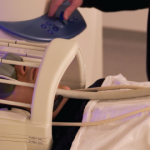The team noted that patients with fibromyalgia have significantly higher anxiety and depressive symptom ratings than control subjects. Within the fibromyalgia group, researchers did not find a relationship between symptoms of anxiety and depression and pain ratings.
The investigators conclude by proposing that patients with fibromyalgia have an enhanced response to pressure stimuli that allows for spontaneous pain to arise in the absence of painful stimulation. They hypothesize that treatments focused on increasing the tone of nonnociceptive sensory activity, such as peripheral nerve stimulation, vibrotactile stimulation and whole-body vibration therapy, may help patients with fibromyalgia. (posted 7/25/14)
Lara C. Pullen, PhD, is a medical writer based in the Chicago area.
